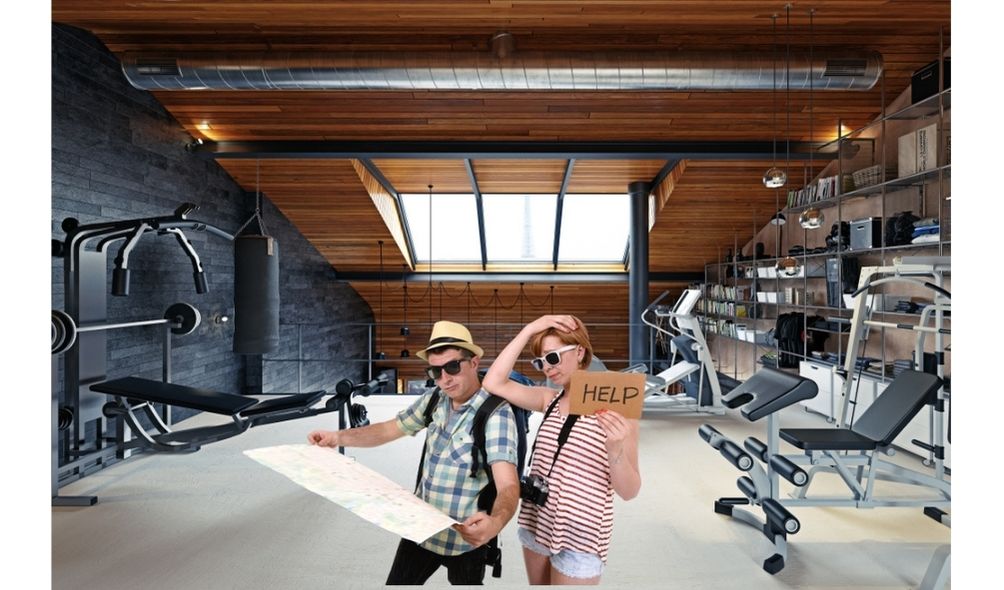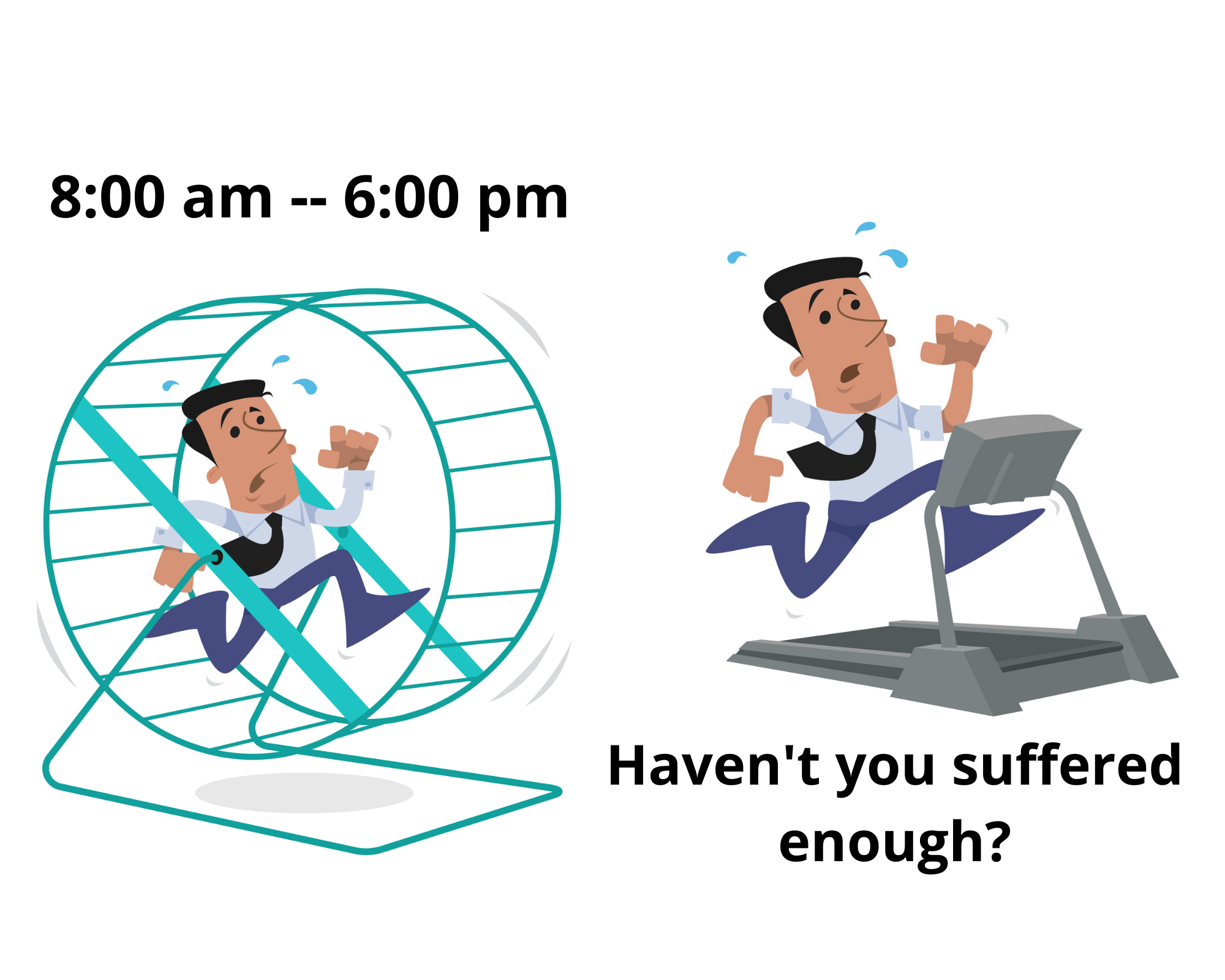We could see her from the window of the second-floor training studio as she finished up the mile-long walk from her house.
Every trainer knows that look, when the adrenaline spins the eyes around, and in between short breaths, she speaks gibberish that can only translate to “I’m ready.”
Her trainer greeted her with just one word. “Treadmill.”
“But I just walked here. I don’t need to warm up.”
“Ha ha ha ha … Treadmill.”
Yes, this is a true story.
Why didn’t the client want to use the treadmill? For the same reason that the trainer wanted her to use it. Cardio machines require no thought. They offer a low-risk, low-reward health club experience. Novice gym members who care more about calorie count than a new challenge will default to the easiest modalities they can find. The same goes for trainers who care more about their next modeling gig than their clients’ development.
Meanwhile, motivated clients who walk to the gym and their enlightened trainers take chances. They get their cardio training on the open floor.

The cardio machine section is the tourist trap of the gym floor.
It’s Times Square while the real New Yorkers are eating pizza in Brooklyn, riding the Cyclone, and reeling in striped bass in Sheepshead Bay. It’s the bus tour straight to Machu Picchu for a quick selfie and a long ride home, while adventure-seekers take their time and trek the Sacred Valley. It’s the Alaskan cruise that stops in Anchorage for 45 minutes before whisking you away to a flat, windswept oil field on the north slope while a much happier family camps out by a river on the Kenai Peninsula under the midnight sun on the vacation of a lifetime.
We join the gym to break the monotony in our lives, not to add to it. Get off the human hamster wheel and get yourself a real workout!
.
Are you questioning your fitness identity yet?
If you’re reading this article in the gym coffee shop while waiting for your 30-minute turn on the treadmill or the elliptical trainer, perhaps you are ready to take a chance.
Iron sharpens iron, diamonds cut diamonds
In the same studio where the tattooed fake muscle guy sent his client to a conveyor-belt-driven purgatory while he updated his Facebook status, another trainer had an interesting take on aerobic exercise. As this industry grows from the inside out, trainers learn more from each other than from a textbook. The normally quiet trainer said "there is no such thing as cardio. You are either in the aerobic pathway or you aren’t." Mind. Blown. He was right. For the unlearned, “doing cardio” and “doing aerobics” are two completely different exercises. The fact is, they both mean the same thing. The heart doesn’t know the difference. You either call upon your cardiovascular system to provide energy to move, or you don’t.
"There is no such thing as cardio. You are either in the aerobic pathway or you aren’t."
Design your own routine
Here are a few pointers to get your cardiovascular routine on your own terms:
Keep your feet on the floor. A lot of videos online present abdominal workouts as cardiovascular exercise. If your body is stationary, you’ll never get your heart rate where you want it, and will only get dizzy when you finally stand up.
Move in all directions. If you’re thinking about jumping jacks, that’s fine for a start. Now you need to include exercises that move you forward and backward, and in rotation.
Play with the toys. There are kettlebells, dumbbells, medicine balls, tubes, bands, and other goodies that haven’t been invented yet just waiting for you. Remember, this should be fun. Try everything.
Keep a notebook. You will come up with exercises as you improvise your way across the floor, especially when your adrenaline starts flowing. Write the exercises down, with a short description. You can incorporate them into a routine next time you come back to the gym.
Put away the phone. Because I said so.
Call in the professionals
This is also a great opportunity to look for a personal trainer to help you develop a routine. Find a floor trainer and ask a simple question. “Is there a way to get a cardio workout without using machines?” The answer determines if you have found a good trainer.
If they respond with a long-winded scientific explanation about the glycolytic pathway vs. the oxidative pathway of muscular energetics, thank the trainer for the explanation and move on. The trainer either recycles the textbook out of a lack of confidence to get started (in counseling, we call that intellectualization), or they just like to grandstand.
Another red flag is if the trainer turns his or her back and expects you to follow behind as they walk away from you. If they do that to you the first time, they will do it to you every time. Again, respond with a polite thank you and walk away.
Now, if the trainer gets excited over the question, you may have a winner. Fitness trainers love to work with a client looking to collaborate on a new routine. From a business standpoint, it’s better to take on a steady long-term client. From a passion for what we do for a living standpoint, a good trainer will jump at the opportunity to help you.
In the year 2525
The fitness industry has to change with the times, meaning you can expect to see more technology in the gym. Don’t let it create digital dependency! These days, people can’t find the bathroom without a GPS. They gather food by linking their smart fridge to the personal assistant app that orders the grocery delivery. Now they want to digitize our industry with more machines and digital gadgets. This trainer is not impressed. The greatest technology in the gym is and will always be the human body.
Learn how the body works, and you’ll have no use for any high-priced, high-tech exercise gimmicks that come your way.


